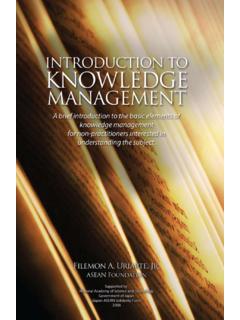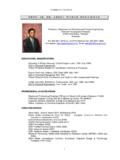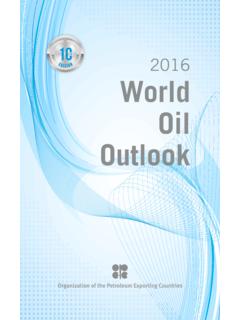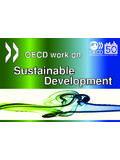Transcription of POVERTY ALLEVIATION - ASEAN Foundation
1 POVERTY ALLEVIATIONI nitiatives of the AS EAN FoundationWith funding support from the Government of Japan(Japan- ASEAN Solidarity Fund) POVERTY ALLEVIATIONI nitiatives of the ASEAN FoundationFOREWORDThe ASEAN Foundation is tasked to contribute to the evolution of a development cooperation strategy that promotes mutual assistance, equitable economic development, and the ALLEVIATION of POVERTY . Accordingly, many of the projects the Foundation supports deal with improving productivity in agriculture and fisheries. Building capacity in these sectors will help improve livelihood since many of ASEAN s poor live in rural areas, in farms and coastal villages. The results they aim for are to increase income, provide basic services and create better opportunities for growth. They also seek to help agencies provide extension services or to implement alternative livelihood projects for rural groups, especially the poor and disadvantaged.
2 Hunger, malnutrition, disease, shelter, illiteracy and other POVERTY related concerns are challenges that most development agencies, including the ASEAN Foundation , seek to address. Some ongoing projects of the Foundation focus on capacity building for better POVERTY analysis. Plans are on stream to bring together NGO experts whose best practices in POVERTY ALLEVIATION can be documented and shared among member countries. This booklet is based on a paper titled Supporting Agriculture and Related Projects in ASEAN for Sustainable Development presented by the ASEAN Foundation during the IFAP Regional Consultation on the World Bank Report, Makati City, Philippines, 15-17 April 2008 and presentations made at the First Regional Forum cum Training Workshop on Linking Small Farmers to Markets, Hanoi, Viiet Nam, 7-11 June 2008 and at the National Nutrition Council Regional Seminar on Nutrition Surveillance in ASEAN , Asian Institute of Management, ACCEED, Makati City, Philippines, 15 July Filemon A.
3 Uriarte, DirectorPOVERTY ALLEVIATIONI nitiatives of the ASEAN Foundation What is ASEAN ?The Association of Southeast Asian Nations or ASEAN was established on 8 August 1967 in Bangkok by the five original Member Countries, namely, Indonesia, Malaysia, Philippines, Singapore, and Thailand. Brunei Darussalam joined on 8 January 1984, Viet Nam on 28 July 1995, Lao PDR and Myanmar on 23 July 1997, and Cambodia on 30 April 1999. The region has a total area of million square kilometers. In 2006, the ASEAN region had a population of about 560 million, a combined gross domestic product of almost US$1,100 billion, and a total trade of about US$1,400 billion. The diversity of the region is apparent in the fact that the largest country in terms of land area is 2,700 times larger than the smallest country; the country with the largest population has 580 times POVERTY ALLEVIATIONI nitiatives of the ASEAN Foundationmore people than the smallest country; and the richest country has a GDP per capita that is 145 times the poorest country.
4 The ASEAN Declaration states that the aims and purposes of the Association are to: accelerate economic growth, social progress and cultural development in the region, and promote regional peace and stability through abiding respect for justice and the rule of law in the relationship among countries in the region and adherence to the principles of the United Nations ASEAN Vision 2020, adopted by the ASEAN Leaders on the 30th Anniversary of ASEAN , agreed on a shared vision of ASEAN as a concert of Southeast Asian nations, outward looking, living in peace, stability and prosperity, bonded together in partnership in dynamic development and in a community of caring 2003, the ASEAN Leaders resolved that an ASEAN Community shall be established comprising three pillars, namely, ASEAN Security Community, ASEAN Economic Community and ASEAN Socio-Cultural Community.
5 What is the ASEAN Foundation ?The governments of the ten ASEAN countries established the ASEAN Foundation on 15 December 1997 during the 30th ASEAN Commemorative Summit of ASEAN Leaders held in Kuala Lumpur, Malaysia. The Memorandum of Understanding on the establishment of the ASEAN Foundation was revised in July 2000 and ratified by all ten member countries in July 2007. POVERTY ALLEVIATIONI nitiatives of the ASEAN Foundation The Foundation has two objectives: Promote greater awareness of ASEAN and greater interaction among the peoples of ASEAN as well as their wider participation in ASEAN s activities inter alia through human resources development that will enable them to realize their full potential and capacity to contribute to progress of ASEAN Member States as productive and responsible members of society. Endeavor to contribute to the evolution of a development cooperation strategy that promotes mutual assistance, equitable economic development, and the ALLEVIATION of POVERTY .
6 The Foundation is mandated to support the following activities: Organize and support activities to promote education, training, health and cultural life. Provide assistance to uplift the social condition of the peoples in the ASEAN Member States. Provide fellowships to and support exchanges of ASEAN youths and students. Promote collaborative work among academics, professionals and scientists. Implement projects assigned by the ASEAN Leaders or Ministers. Collaborate with relevant ASEAN bodies. Organize its own projects and actively raise funds for the Foundation s activities. POVERTY ALLEVIATIONI nitiatives of the ASEAN FoundationThe ASEAN Charter, in Article 15, provides that the ASEAN Foundation shall: support the Secretary-General of ASEAN and collaborate with the relevant ASEAN bodies to support ASEAN community-building, and promote greater awareness of the ASEAN identity, people-to-people interaction, and close collaboration among the business sector, civil society, academia and other stakeholders in , cultural, economic, social and other relevant government institutions and bona fide non-governmental organizations of ASEAN member countries are eligible for assistance from the Foundation in conformity with its stated objectives.
7 As of March 2008, the ASEAN Foundation has supported 121 projects in the areas of social development, science and technology, environment and culture and information amounting to US$ million. Of these, 91 projects have been completed amounting to US$ million while 30 projects are ongoing amounting to US$ million. Projects on POVERTY AlleviationOf the 121 projects, 43 projects deal with POVERTY ALLEVIATION (including agriculture projects) representing 39% of the project funds of the Foundation . Thirty-four of these have been completed with a total cost of US$ million while nine projects are ongoing with a budget of US$2,265, ALLEVIATIONI nitiatives of the ASEAN Foundation POVERTY and MalnutritionThere is inextricable link between POVERTY and malnutrition. The ASEAN Foundation supports initiatives on nutrition surveillance in line with its mandate to address issues related to POVERTY ALLEVIATION . A nutrition surveillance system on nutrition and nutrition-related information will be useful to policy-makers, officials at national and local levels from both government and non-government offices, the international community, researchers, and the community in general.
8 Provision of accurate and timely information generated through nutrition surveillance to policymakers will lead to decisions that will impact on the overall reduction of under-nutrition in the ASEAN region. This regional undertaking is envisioned to strengthen regional collaboration in nutrition and enhance individual country efforts on nutrition surveillance. A study conducted by N. W. Jerome and J. A. Ricci for the American Society for Clinical Nutrition made the following conclusions which may be of relevance:Political will to implement nutrition surveillance is the key factor in establishing and maintaining an effective surveillance system. Such will, however, must be strengthened by sensitizing policymakers and development officials to the importance of nutrition surveillance system in alleviating POVERTY and promoting the health and well-being of people. There is need for research, technical assistance, and capacity building to improve the quality of nutrition surveillance system information and its timely dissemination.
9 The limitation of current methods of collecting and processing dietary data must be overcome so that the energy and nutrient consumption of individuals and households can be described more accurately. The emergence of chronic diseases among the primarily affluent urban populations in developing countries signals a need to begin to monitor those conditions while continuing to track protein-energy malnutrition and micronutrient deficiencies. Community-based nutrition surveillance systems are essential to the design of sustainable development strategies. Communities must take control of assigning priorities to their health and nutrition problems and identifying appropriate solutions. POVERTY ALLEVIATIONI nitiatives of the ASEAN FoundationWorld Development Report 008 and ASEAN Foundation ProjectsThe World Development Report 2008 asks the question, What can agriculture do for development? The Report replies that agriculture contributes to development as an economic activity, as a livelihood, and as a provider of environmental services.
10 These contributions differ in the three rural worlds: a) agriculture-based countries, where agriculture accounts for 32 percent or more of GDP growth on average; b) transforming countries, where agriculture contributes on average only 7 percent to GDP growth; and c) urbanized countries, where the contribution of agriculture to GDP growth is only 5 percent or less on average. In the ASEAN region, three countries, namely, Cambodia, Lao PDR, and Myanmar belong to the first category of agriculture-based countries where agriculture accounts for percent, percent, and percent of GDP, respectively. Five countries, namely, Indonesia, Malaysia, Philippines, Thailand and Viet Nam, belong to the second category of transforming countries where agriculture accounts for 15 percent, percent, percent, percent, and percent of GDP, respectively. Two countries, namely, Brunei Darussalam and Singapore belong to the third category of urbanized countries where agriculture accounts for percent and percent of GDP, respectively.







